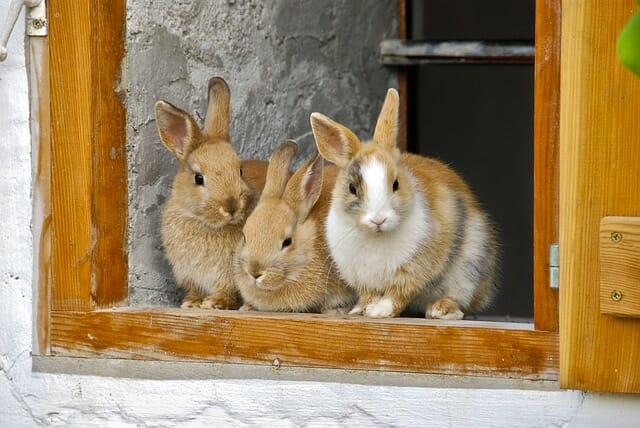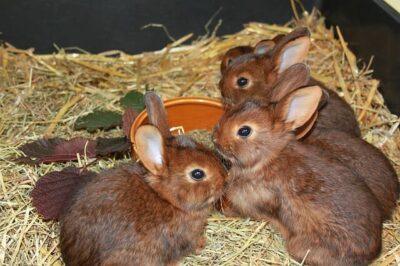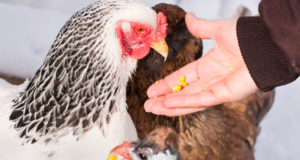Like many adages, “breeding like rabbits” is founded on some truth. That’s because unlike other animals – like chickens — the drive to reproduce remains strong in rabbits.
To breed, put the doe into the buck’s living area. Within seconds, the buck will mount the doe, mate, and then fall over. Let this happen three or four more times, and voila! you have a pregnant doe! This is how it happens more than 95 percent of the time, but once in a while things go wrong.
Troubleshooting
There are many reasons a mating attempt is unsuccessful. First, does have a hormonal cycle of 16 to 18 days. They are willing to mate for 12 to 14 days, and then refuse for a few days. If a doe refuses to mate, she’s likely in this latter stage. Give her a few days and try again.
Does also may be reluctant to mate in late fall, when their hormonal levels are lower.
Diatomaceous Earth: The All-Natural Livestock De-Wormer!
Finally, if the doe is aggressive to the buck, she already may be pregnant. When this happens, remove the doe immediately; she can be very dangerous to the buck in this condition.
Now What?
If you think the doe is pregnant, there are a few tasks that need to be performed on a schedule.
At 10 to 12 days, you can check for pregnancy. This technique is called “palpation,” and it involves feeling the underbelly for unborn rabbits. It’s not an easy technique for beginners, so I suggest checking out a YouTube video for a demonstration.
At 28 days, put a nest box in the cage. A next box is where the doe will give birth and the kits will live for the first several days of their lives. It consists of a box, with an open top, just slightly larger than the doe, partially filled with wood shavings and straw. The doe will add hair picked from her own stomach area for added warmth.
On the evening of the 31st or 32nd day, the doe will give birth. The next morning, you won’t see much, just a pile of fur that moves gently up and down as the new kits sleep and breathe.
From Birth to Weaning
Mother rabbits know how to take care of their young. As long as you give them plenty of water and food, they will raise their young without much help from you.
However, there a couple of things to do to help her out. First, the day after the litter is born, take out the nest box and gently remove the kits. Check the box for any dead kits or left-over placenta. Remove these to prevent disease. Second, every few days, check the nest box to make sure momma hasn’t started using it as a bathroom. While a few pellets are fine, if there are a lot of pellets and the straw is wet, then the nest box needs to be cleaned. Carefully remove the kits, remove the wet bedding materials, clean the box and replace the bedding. Put the kits back in it.
In about three weeks, one adventurous kit will make its way out of the nest box. At this time, you can remove the nest box and let the kits roam around the cage. But if it’s still winter, leave the nest box in for a few more days so they can retreat for added warmth.
Once the kits are out of the nest box, make sure they are eating the food momma is given, and that they are drinking water. At six weeks or so, you re-breed the does and can begin weaning the kits. Then you can do it all over again!
What advice would add for breeding rabbits? Share your advice in the section below:
 Off The Grid News Better Ideas For Off The Grid Living
Off The Grid News Better Ideas For Off The Grid Living





